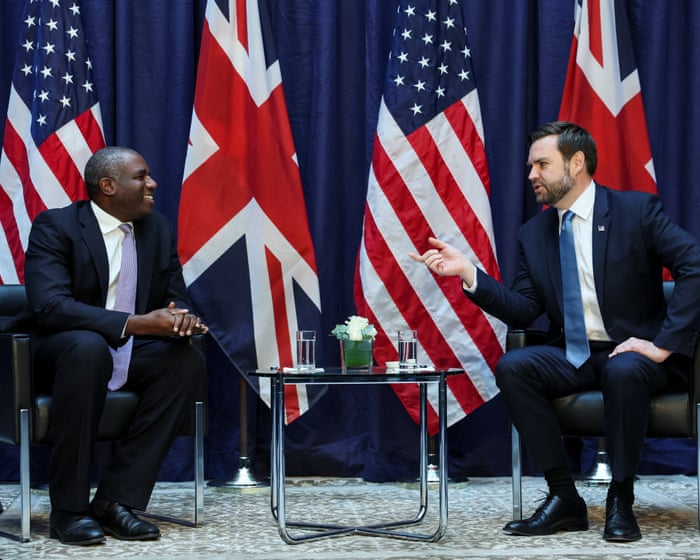US officials have informed NATO allies that they intend to pressure President Volodymyr Zelenskyy to accept a peace deal in the coming days, warning that if Kyiv refuses, it could face even harsher terms later.
Dan Driscoll, the US Army Secretary, updated NATO ambassadors during a meeting in Kyiv late Friday, following discussions with Zelenskyy and a call from the White House. According to an attendee, Driscoll stated, “No deal is perfect, but it must be done sooner rather than later.”
The atmosphere was grim, with several European ambassadors expressing concerns about the deal’s terms and the US’s secretive negotiations with Russia. One source described the meeting as a “nightmare,” recalling Trump’s earlier assertion that Zelenskyy had “no cards to play” during a tense White House meeting in February.
The proposed deal includes provisions likely unacceptable to Kyiv, such as ceding Russian-occupied territories and surrendering additional land still under Ukrainian control. It also suggests amnesty for all war crimes committed during the conflict.
In a video address on Friday, Zelenskyy described this as “one of the most difficult moments of our history,” framing Ukraine’s choice as “losing our dignity or losing a key ally.”
Driscoll, a close associate of Vice President JD Vance who recently took over Ukraine matters, avoided specifics on whether the deal aligns with a previously published 28-point plan. He emphasized focusing on what truly matters, dismissing some elements as “window dressing.”
The US’s sudden announcement surprised other allies, who were unaware of the plan’s details. European officials worry that Russia has had excessive influence in drafting the agreement, which is being presented to Ukraine as non-negotiable.
Driscoll defended the approach, stating it streamlined the process, and quoted Trump’s desire for immediate peace, saying, “The more cooks in the kitchen, the harder it is to handle.”
Julie Davis, the US chargée d’affaires in Kyiv, echoed this sentiment, warning that the terms, though severe, would only worsen if rejected. “The deal does not get better from here, it gets worse,” she told diplomats.
Trump is pushing for Zelenskyy’s agreement by Thanksgiving this Thursday. Davis earlier described the diplomatic efforts as the “most ambitious” of her career, highlighting an “aggressive timeline” for finalizing the deal.
When questioned about Ukraine ceding eastern territories that Russia hasn’t captured in 11 years, a US official claimed the deal “was beneficial to Ukraine,” envisioning a joint signing by Trump and Zelenskyy for peace.
The plan was reportedly crafted by Trump aide Steve Witkoff and Kremlin adviser Kirill Dmitriev, serving as a key backchannel between Washington and Moscow. Driscoll is expected to travel to Russia soon to discuss the proposal.
On Friday, Vladimir Putin confirmed Moscow had received the plan, telling security officials, “I believe that it can be used as the basis for a final peaceful settlement.”
Frequently Asked Questions
Of course Here is a list of FAQs about the reported US warning to NATO regarding Ukraine and a potential peace agreement with clear and concise answers
Basic Definition Questions
1 What is the main issue being discussed here
The United States has reportedly warned its NATO allies that if Ukraines President Zelenskyy does not agree to a peace deal to end the war with Russia the situation for Ukraine could become much worse in the future
2 What is a peace agreement in this context
A peace agreement is a formal deal between Ukraine and Russia to stop the fighting It would likely involve terms like new borders security guarantees and the future status of occupied territories
3 What does NATO have to do with this
NATO is a military alliance of North American and European countries including the US The US is sharing its assessment with its allies to coordinate a unified strategy and prepare for potential future scenarios
Motivations Strategic Questions
4 Why would the US give this warning
The US may be concerned about the longterm sustainability of the war Potential reasons include the strain on Western military supplies the risk of the conflict escalating the economic impact of prolonged war and an assessment that Ukraines military position might not significantly improve
5 What kind of more severe consequences could Ukraine face
This could mean a larger and more powerful Russian offensive the permanent loss of more Ukrainian territory greater destruction of infrastructure and cities a higher number of military and civilian casualties and longterm economic devastation
6 Isnt the US supporting Ukraine Why pressure them for peace
Yes the US has been a major supporter This warning reflects a difficult strategic calculation balancing continued support with the reality that a prolonged war may not end in a clear victory for Ukraine and could carry immense risks
Complex Advanced Questions
7 What are the arguments against pushing Ukraine into a peace deal now
Critics argue that pressuring Ukraine to negotiate from a position of weakness could reward Russian aggression set a dangerous international precedent and force Ukraine to accept unjust terms that compromise its sovereignty and security
8 What might be in a potential peace agreement that both sides could accept
This is extremely difficult Potential points could include a ceasefire along current front lines security guarantees for Ukraine but not NATO




